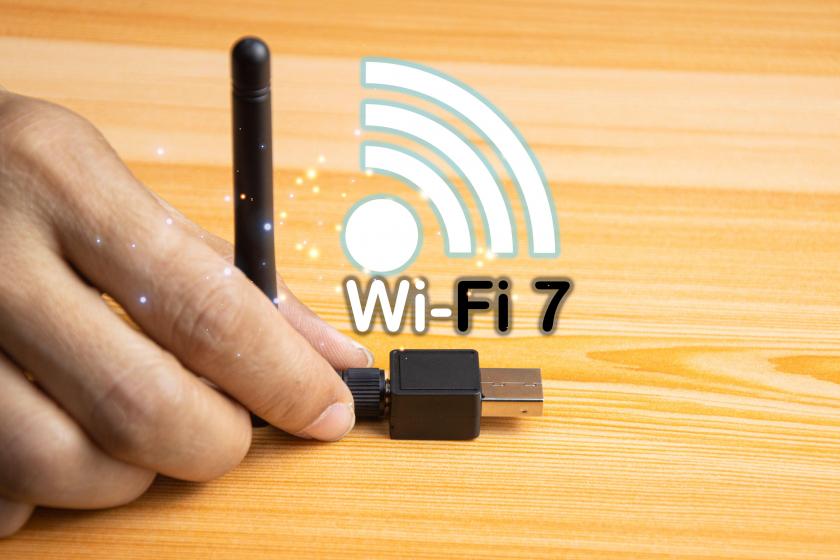Articles
Sample Articles from Bob Wallace.
Read More about Bob.
Satellite Operators Team to Pursue Direct-to-Device Opportunity
- Details
- Published on 22 February 2024

(Credit: colaimages / Alamy Stock Photo)
New mobile association seeks help developing integrated terrestrial and non-terrestrial network (NTN) services for smartphones and IoT devices worldwide.
A group of five prominent satellite operators has launched a new association to accelerate the emergence of direct-to-device (D2D) services for use by businesses and consumers.
Introduced on February 9, the Mobile Satellite Services Association’s founding members include ViaSat, Ligado Networks, Terrestar Solutions, Omnispace, and Al Yah Satellite Communications Company.
What they need to eventually succeed in building an open standards-based interoperable framework is the buy-in of mobile phone makers, chipset vendors, government groups, and mobile operators into the MSSA's planned ecosystem.
The MSSA’s charter members claim they bring to the table over one hundred megahertz of L- and S-band spectrum that has already been allocated and licensed for a range of services.
Coming Soon to Mobile World Congress 2024
The fledgling association will be attending the fast-approaching Mobile World Congress (MWC), a global mobile event, to recruit additional members, according to an MSSA spokesperson.
The MSSA has “a vision of integrating terrestrial and non-terrestrial network (NTN) services to deliver scalable, sustainable, and affordable connectivity to any device, anytime, anywhere.” That includes uniform chipsets that mobile handsets, IoT modules, and more devices can use to operate anywhere in the world despite what countries currently have for cellular services. “Once a user loses a cell signal, the handsets will switch over to the satellite connection,” explained Jacques LeDuc, Founding Member and Treasurer of the MSSA. He is also CEO of Terrestar Solutions, a Canadian satellite operator serving the country’s vast land mass that lacks cellular service.
Sought-after MSSA services would include non-proprietary offerings, which could serve as much-needed redundancy for businesses operating in areas with suboptimal cell service. Being able to use a set of interoperable services globally would also enable the long-term goal of mobile subscribers to roam the world, explained LeDuc.
“MSSA is trying to prevent fragmentation in the standards and promote interoperability for Direct-to-Device (D2D) satellite communications,” said Dave Bolan, Research Director at the Dell’Oro Group, a global technology market research firm. “Currently, MNOs and/or device manufacturers are enabling D2D satellite communications individually with different satellite service providers. They may or may not be following 3GPP standards with different signaling standards, he cautioned. “The MSSA believes to scale D2D satellite communications, interoperability is key, which they are promoting.”
The D2D NTN method allows a smartphone or an IoT device to connect directly to a satellite without an intermediate gateway when the device is out of range of an MNO's coverage area. To date, it has been focused on SMS messaging, explained Bolan.
The MSSA Take
"The MSSA is a game-changer for businesses, offering unparalleled connectivity that spans critical sectors like cellular, industrial, government, agriculture, maritime, automotive, and emergency services," said LeDuc. It's more than an association; it's about stepping into a future where everyone and every business, no matter the size, benefits from the advancements made by current mobile satellite license holders. This connectivity is key to smoother operations and enhanced safety for all."
The non-profit MSSA claims it intends to align with the 3rd Generation Partnership Project (3GPP) standards to extend terrestrial mobile coverage for both Mobile Network Operator (MNO) and Over-the-Top (OTT) internet services. It also plans to work with the GSMA to reach its goal of device interoperability.
The Race is On
The Deloitte Center for Technology, Media & Telecommunications (TMT), discussed the market in its TMT 2024 Outlook.
There is a race to build a new set of satellite-enabled global telecommunications services for consumers, enterprises, and governments. Basic services for emergency communication, text messages, and IoT monitoring have already started.
"To help make this a reality, capital is being raised, satellites are being launched, chips have been developed, regulatory frameworks established, and agreements with mobile network operators are being secured," the Deloitte analysts wrote. "Some are very bullish on the potential size of the market (reaching tens of billions of dollars in the next ten years), while others are expecting it to take a long time to mature and generate sufficient revenue."
In either case, they concluded, "this could represent an opportunity to significantly increase the size of the global satellite communications market."
What about the other satellite-to-cell phone efforts?
MSSA has launched and faces ongoing competition from satellite-to-phone services from the likes of Lynk Global, AST Space Mobile, T-Mobile and SpaceX, and Apple-Globalstar. These players see the use of cellular spectrum from their MNO alliances to quickly build a large customer base.
Two critical questions for Enterprise IT are:
What is the timing for satellite-to-cellphone services? SpaceX-owned Starlink claimed its satellite-to-cellphone (NTN) service will launch in 2024. The Musk-owned company said in mid-October it will first offer SMS, followed by voice and data services, and IoT connectivity in 2025.
Will the latest developments accelerate the availability of satellite services? What remains to be seen is how quickly emerging satellite services can expand and gain broad acceptance from businesses, financiers, regulators, and countries around the globe.
Related articles:
- 5 Challenges for Enterprises Considering LEO Satellite Services
- The Bottom Line on Upcoming Non-Terrestrial Network (NTN) Services
- Avoid Business Disruption in Times of Turmoil Here and Abroad
5G RedCap Promises Nirvana for IoT Deployments Globally. But Can it Deliver?
- Details
- Published on 15 February 2024

(Credit: Zoonar GmbH / Alamy Stock Photo)
Keeping IT’s attention as 5G Reduced Capacity (RedCap) services emerge will require rising above competitive solutions.
5G Reduced Capacity (RedCap) has the potential to fuel digital transformation by enabling IoT devices and use cases worldwide, but the specification is still in the early stage of proving its promise.
Last year saw limited progress as Qualcomm and Ericsson announced a few RedCap devices. Several telcos (Verizon with Nokia and MediaTek) announced tests of the early infrastructure offerings.
But the fledgling RedCap ecosystem needs to do more than marketing to convert its potential into progress, say wireless industry experts. “Are we adjusting mobile infrastructure revenues upward to accommodate stronger than expected data traffic growth as a result of an onslaught of RedCap devices?” asked Stefan Pongratz, Vice President for RAN and Telecom Capex research, at Dell’Oro Group, a global market research and analysis firm. “The answer is no. But we are monitoring the situation and expect to see some traction over the next couple of years.”
In teams of near-term developments, Pongratz expects commercial devices in 2024 and early adopters to kick the tires.
RedCap Recap
5G RedCap was created to add value and revenue to 5G implementations by enterprises and telcos by extending the standard down to a sea of IoT devices seeking higher speeds and lower latency than current solutions.
5G RedCap delivers throughputs of 150 and 50 Mbps in the downlink and uplink, respectively. This is far below 5G's support for gigabits of throughput but still well above the capabilities of current NB-IoT (downlink of 26 Kbps and an uplink of 62 Kbps) and eMTC (Cat-M1) offerings, which support a downlink of 58 Kbps and an uplink of 1.1 Mbps).
Creators hope RedCap means broader applicability for 5G and thus drives its emergence forward, in part by serving a broader array of use cases in industry and enterprise verticals and consumer applications.
"One of the primary aims is the full integration of IoT into 5G networks is to benefit from overall system technologies such as service-based architecture, network slicing, and the flexible air interface capabilities of standalone (SA) 5G," explained Kester Mann, at CCS Insight, a market research firm in the U.K.
This would enable telecom operators to offer custom services to enterprises and perhaps consumers.
But since it’s early on, Ericsson, which makes equipment for operators worldwide, has identified these use cases as a possible match for 5G RedCap. For consumers:
- Smartwatch/wearable – longer battery life with richer functionality.
- AR/VR – slim form factor AR glasses for shopping, sightseeing, mid-range multimedia, service applications, information, and education.
For industry:
- Video monitoring – keep an eye on your entire facility using cameras and sensors.
- Smart manufacturing – connecting every part of the process.
- Inventory management – register your stock, move it around, and change its status when sold or delivered.
RedCap Challenges
Beyond video? While many use cases can benefit from the high-speed and low latency features of 5G and 5G RedCap, especially those supporting video delivery, attracting enterprises using LPWA networks or those using much less than 5G, such as 4G wireless, seems to be a tall task.
Sunsets drive 5G day breaks. That's the case for all the enterprises in the U.S. and abroad who have migrated their networks to 4G as operators in their countries have sunsetted slower and older 2G and 3G networks to use the spectrum and other resources for 5G rollouts.
Low-speed networks continue. Those still using tried and true LPWA networks have done so because they employ low cost, long battery life modules. The devices transmit often sporadic data that works well with low-speed connections.
Luring manufacturers to 5G RedCap for part or all of their building processes to Industrial Internet of Things (IIoT) seems like a bridge too far for years to come.
Spending slowdowns. The second half of last year saw a slowdown in telecom spending, vendors slashing staff, consolidation leading some to drop product lines, and more. For RedCap to evolve to fill a pitched gap between current solutions and full-bore 5G speed, low latency, and features, spending on 5G infrastructure and IoT tech needs to head upward. That’s a tall task in uncertain markets.
Related articles:
Understanding SASE Architecture
- Details
- Published on 08 February 2024

(Credit: PeachPanthermedia / Alamy Stock Photo)
SASE converges the functions of network and security point solutions into a unified, global, cloud-native service. Such capabilities provide enterprises with a number of benefits.
Secure Access Service Edge (SASE) is an enterprise networking architecture category introduced by Gartner in 2019. It converges the functions of network and security solutions into a unified, global cloud-native service.
SASE allows an architectural transformation of enterprise networking and security. It is typically delivered as a service, but enterprises can also combine WAN and security services into their own managed SASE solution.
One of the challenges those new to SASE technology often encounter is that solutions can be quite complex as they are made up of many discrete elements. One way to better understand what SASE is and what it does is to look at those elements.
Wi-Fi Alliance Wi-Fi Certified 7 Program to Drive Deployment
- Details
- Published on 30 January 2024

(Credit: tanit boonruen / Alamy Stock Photo)
Performance improvements make Wi-Fi 7 ideal for streaming applications and for reducing congestion in crowded environments.
This week marked a milestone in the evolution of Wi-Fi 7 with the introduction of W-Fi Certified 7, a program from the Wi-Fi Alliance to drive interoperability of products that employ the standard.
Wi-Fi Certified 7 will facilitate worldwide interoperability and bring advanced Wi-Fi performance to the next era of connected devices. It is based on IEEE 802.11be technology and will be available before the end of Q1 2024, according to the alliance.
Building on Wi-Fi 7 progress last year
Last year saw chip, module, and device vendors, including Qualcomm, Broadcom, Intel, MediaTek, and CommScope, roll out products. Now, the Wi-Fi Alliance is forecasting more than 233 million Wi-Fi 7 devices to enter the market in 2024, growing to 2.1 billion devices by 2028.
One analyst called 2023 an exciting year for the overall Wireless LAN Market. “We saw record high revenues, growth of Wi-Fi traffic in the new 6 GHz band, and like a cherry on the sundae...the very first Wi-Fi 7 APs [access points] for enterprises,” explained Siân Morgan, Research Director at Dell’Oro, a global technology market research and analysis firm. “There are some new trends shaping up for 2024, and Wi-Fi 7 will be an important vector of growth.” The future looks bright. Dell’Oro predicts enterprise-class Wi-Fi 7 revenues will exceed $5 billion in 2027.
Wi-Fi 7 differentiators for the enterprise
The Wi-Fi Alliance claims Wi-Fi 7 devices already on the market support a range of new features such as higher throughput, deterministic latency, and greater reliability for critical traffic.
Performance improvements make Wi-Fi 7 ideal for streaming applications and for reducing congestion in crowded environments. As we reported in September, more users can run more bandwidth-intensive and latency-dependent applications without incurring performance problems. An enterprise can support more users with fewer APs, which translates into lower management costs.
To date, the earliest users of the previously fastest Wi-Fi version, 6E, have been owners of stadiums and indoor venues where professional sports and concerts (large, tightly packed audiences) are king.
There is some good news for users of older Wi-Fi versions on the compatibility front.
"Wi-Fi 7 certified devices and APs will be compatible with older Wi-Fi versions," confirmed Morgan. "However, only users in the countries that have attributed the 6 GHz band for unlicensed use, such as in North America, most of South America, and Europe, will be able to access the new frequency. In other countries, Wi-Fi 7 will operate in the legacy bands: 2.4 GHz and 5 GHz".
Potential Wi-Fi 7 use cases
The alliance expects the new capabilities to support new use cases, including multi-user AR/VR/XR, immersive 3-D training, electronic gaming, hybrid work, industrial IoT, and automotive.
The Wi-Fi 7 feature menu
The Wi-Fi Alliance listed the following advanced features of version 7:
- Multi-link operation (MLO), which enables devices to transmit and receive data simultaneously over multiple links. This increases throughput, reduces latency, and improves reliability.
- 4K QAM, which achieves 20% faster transmission rates than 1024 QAM.
- 512 Compressed block-ack, which improves efficiency while reducing overhead.
- 320 MHz channels, which are available in those countries where the 6 GHz band is available for Wi-Fi. The ultra-wide channels double the widest channel size to facilitate multigigabit device speeds and high throughput.
- Multiple RUs to a single STA, which is designed to improve flexibility for spectrum resource scheduling to enhance spectrum efficiency.
- Triggered uplink access, which is designed to optimize Wi-Fi 6, defined triggered uplink access to accommodate latency-sensitive streams and satisfy QoS requirements.
- Emergency Preparedness Communication Services (EPCS), which is designed to provide seamless National Security & Emergency Preparedness (NSEP) service for users while also maintaining the priority and quality of service in Wi-Fi access networks.
Summarizing the capabilities, features, and potential of the technology, Kevin Robinson, Wi-Fi Alliance president and CEO, said (in a prepared statement): “The introduction of Wi-Fi Certified 7 marks the emergence of the latest generation in the evolution of wireless connectivity. This certification underscores our commitment to delivering cutting-edge technology that redefines the way users experience Wi-Fi, providing faster speeds, improved efficiency, and increased reliability, which expand the horizons of what is possible through Wi-Fi."
Related articles:
Expect a BEAD Broadband Slowdown in 2024
- Details
- Published on 30 January 2024

(Credit: Zoonar GmbH / Alamy Stock Photo)
Enterprises are advised to monitor broadband deployment activity at the state level as providers take advantage of funding made available in the
Broadband Equity Access and Deployment (BEAD) portion of the nation's Infrastructure and Jobs Act.
As the Broadband Equity Access and Deployment (BEAD) portion of the president's historic $1 trillion Infrastructure and Jobs Act continues into 2024, enterprises should expect a slowdown in activity and progress.
First, a non-technical reason. It is a presidential election year during which Congress often becomes the opposite of progress. With the polarized parties campaigning intensely, passing bills beyond a budget to keep the lights on for more than a few months seems farfetched.
Secondly, a timing reason. Remember that only the first installment of the approved funds gets handed out early in the year, with the rest of the $42.5 billion dispersed later in the year.
What is the enterprise impact of BEAD?
“2024 will be the year that the proposals will be reviewed, and states will receive their initial 20% disbursement. So, it is best for enterprises to continue to monitor the progress of each state to understand where in the process they might fall,” explained Jeff Heynen, Vice President of Broadband Access and Home Networks for Dell’Oro Group, a market research and analysis firm. "Ultimately, I think the entire process is going to go a lot slower because of the election, continued disagreements on maps, pole attachments, etc. I see the whole BEAD process extending through 2030."
Enabling BEAD: Streamlining the pole attachment process
The FCC began efforts in mid-December to simplify, streamline, and speed up the long and arduous pole attachment process to help BEAD broadband rollouts.
These new rules will allow for faster resolution of pole attachment disputes and provide pole attachers with more detailed information about the poles they plan to use as part of their broadband buildouts. The new rules will speed up the pole attachment dispute resolution process by establishing a new intra-agency rapid response team and providing the team with specific criteria to apply when considering complaints. The Commission’s rules also will increase transparency for new broadband buildouts by allowing attachers to obtain pole inspection reports from utilities. In addition to the new rules, the Commission proposes to set defined timelines for large pole attachment applications.
In 2024, we may witness more networks transitioning underground as part of hardening efforts. While this may be more costly, it is a strategic move to enhance network resilience and minimize damage from environmental factors like storms, wildfires, and other natural disasters.
Across the nation, telephone poles are in rough shapes in many areas. They have broken over time, with utilities keeping the part in the ground and attaching newer pieces to complete the everyday structure.
More money for Middle Mile Networks
The NTIA has already awarded the $1 billion from Biden's bill to upgrade and expand this crucial infrastructure that ties access networks to a variety of backbone networks. These networks also often connect radio towers, data centers, and carrier-neutral exchange facilities. Many say additional funding will be required to achieve goals, but passing a spending bill in an election year seems nearly impossible – especially after Congress punted the national spending bill to February and failed to pass foreign aid bills in 2023.
“Subsidization of middle mile networks is intended to expand their reach into more communities so that they can deliver premium broadband services to both residential and business customers,” explained Dell’ Oro’s Heynen. “Without those networks, communities are on an island. So, they are critical infrastructure that deserves as much attention as the last mile networks themselves.”
Continued staff shortages
2023 saw a continuing discussion of the shortage of skilled staff needed to deploy the infrastructure needed to deliver broadband access to unserved and underserved areas. Last year, the Fiber Broadband Association and the AT&T-Corning duo, among others, continued addressing this large challenge with promising results.
According to the government's calculations, 150,000 telecom jobs will be created by BEAD, while research by the FBA estimates the industry will need over 205,000 new jobs in the next five years. In October, the FBA and Wireless Infrastructure Association (WIA) teamed to cross-promote each other's workforce training undertakings.
“The Fiber Broadband Association is aggressively pursuing the goal to bring our fiber-optic training to community colleges veterans and training institutions in all 56 U.S. states and territories," explained Gary Bolton, president and CEO of the FBA. "However, it is partnerships with accomplished organizations like the Wireless Infrastructure Association (WIA) that enable our industries to truly advance mutual initiatives to enable every community to experience the benefits of high-speed connectivity."
He stressed that achieving the BEAD goal requires much more than money. “We cannot do that without a larger technical workforce to build the networks. This partnership with WIA will help close that workforce gap.”
The road ahead for BEAD
National undertakings always face challenges, and BEAD is no exception. Monitoring developments at the state level should keep enterprises abreast of developments in 2024.
Related articles:
10 SD-WAN Providers & Solutions to Consider in 2024: An Overview
- Details
- Published on 30 January 2024

(Credit: Illia Uriadnikov via Alamy)
IT leaders are increasingly turning to a Software-Defined Wide-Area Network (SD-WAN) overlay. Here, we look into ten of the most popular SD-WAN providers.
What Is SD-WAN?
When designing a network to connect central and far-flung offices, IT leaders are increasingly turning to a Software-Defined Wide-Area Network (SD-WAN) overlay. A software-defined wide-area network (SD-WAN) is a virtual WAN architecture that's service provider-agnostic. This allows enterprises to leverage any assortment of transport services to securely link to desired applications. The list of transport services includes broadband Internet, Multiprotocol Label Switching, and Long-Term Evolution (wireless).
The increasingly popular and flexible SD-WAN architecture provides a network overlay and decouples network software services from hardware-providedWAN links. SD-WAN gives you a wide array of cost-effective and versatile services with which to build and enhance your enterprise network to meet today’s ever-changing business needs.
10 SD-WAN Providers to Consider in 2024
Cisco SD-WAN Services: Catalyst and Meraki
Cisco Catalyst
Catalyst SD-WAN connects any user to any application with integrated capabilities for multicloud, security, predictive operations, and enhanced network visibility. The offering enables you to deliver network connectivity that’s cloud-agnostic, efficient, and simple to manage, lowers operational costs, and increases control and visibility.
Cisco Catalyst SD-WAN Manager provides a dashboard designed to simplify network operations. It provides centralized configuration, management, operation, and monitoring.
Cisco Catalyst SD-WAN Manager provides a dashboard designed to simplify network operations. It provides centralized configuration, management, operation, and monitoring.
Cisco Meraki
Cisco also offers Meraki SD-WAN, which is viewed as extremely user-friendly, from cloud-based network management to its template-based configuration and deployment. The Meraki cloud infrastructure is designed to be very reliable, with data centers providing redundancy to maintain uptime and performance.
A range of additional capabilities enhances the product, for example, endpoint management and integration with security cameras. Meraki SD-WAN provides comprehensive security coverage, including SASE security and additional capabilities that include an array of device management.
Through the cloud platform, Meraki offers tracking of connected devices from any site and through all types of connectivity options.
Fortinet Secure SD-WAN
The security-focused vendor delivers fast, scalable, and flexible Secure SD-WAN on-premises and in the cloud. Fortinet Secure SD-WAN supports cloud-first, security-sensitive, and global enterprises, as well as the hybrid workforce. The vendor’s Secure Networking approach uses one operating system and consolidates SD-WAN, next-generation firewall (NGFW), advanced routing, and ZTNA application gateway functions.
Fortinet Secure SD-WAN is foundational for a transition to SASE and SD-Branch. It enables organizations to protect their investment and simplify operations en route to their journey to a Zero Trust Architecture. Its SASE offering delivers a set of networking and security capabilities, including secure web gateway (SWG), universal zero-trust network access (ZTNA), dual-mode cloud access security, Firewall as a Service, and secure SD-WAN integration.
Citrix SD-WAN Service
Citrix SD-WAN service secures your hybrid workforce. Citrix SD-WAN extends the network into IaaS/PaaS clouds.
It uses deep packet inspection to identify the type of application and apply the configured firewall policy to its traffic. This integration of the firewall on the branch appliance helps reduce the unnecessary traffic getting backhauled and wasting valuable WAN resources only to be blocked at the head-end.
The Citrix SD-WAN service is designed to manage data centers and clouds through monitoring analytics and performance assurance. The SD WAN solution offers Quality of Experience monitoring, troubleshooting and management tools.
Versa Networks SD-WAN
Versa Secure SD-WAN enables network teams to remove the barriers that legacy WAN branch architectures have placed on strategic IT projects and business processes.
The vendor’s solution, powered by Versa networking and security software along with commodity hardware, offers several crucial capabilities for enterprises. Versa eliminates appliance sprawl in the branch office with a software-based approach to SD-WAN and security functions.
It is implemented at data centers, clouds, and branch sites, enhancing service agility and significantly reducing capital and operating costs. The Versa SD-WAN allows integration of essential security functions, such as next-generation firewall and secure web gateway, into network infrastructure via service chaining. The SD-WAN solution uses Zero-Touch Provisioning to simplify network setup and management.
Read more: 10 SD-WAN Providers & Solutions to Consider in 2024: An Overview
